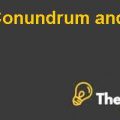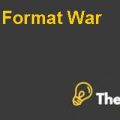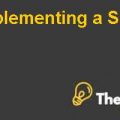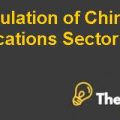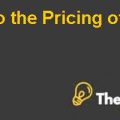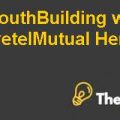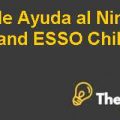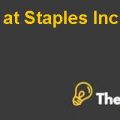
Answer # 1:
The statement that ‘Moderate borrowing will not increase the required return on a firm’s equity’ in a world of no taxes, no transaction costs and no financial distress cost, as per Modigliani and Miller’s second preposition is deemed to be False.
Answer # 3:
Under perfect capital markets, in which there are no taxes, no cost of transaction and no financial distress cost, the proportion of equity and debt in a company’s capital structure do not affect the value of the company. In this type of market, due to the absence of issuance cost, financial distress cost, bankruptcy cost and taxes, the debt is considered risk free and almost identical to the equity.
In such a scenario, the shareholders’ required rate of return is directly proportional and increases linearly to the gearing ratio (debt-to equity ratio) of the company based on the market values. Any increase in the value of debt in the capital structure of a firm will increase the required return of shareholders in the no-tax world, according to Modigliani and Miller. This is due to the factor that the elevated levels of debt will make the equity of the company more risky as debt has a precedence claim on the assets of the company (Frentzel, 2013).
Moreover, the payment of interest expense on debts will also reduce the cash availability at shareholders’ disposal. There is also no effect on the cost of capital of the company by increasing the debt proportion as the savings attained by getting cheaper debts is compensated by an increase in the cost of equity due to augmented risk levels.
On the other hand, in case of the Modigliani and Miller preposition with tax, moderate increase in the value of the debt will not increase the cost of equity. The degree of change in the cost of equity depends upon the level at which the company uses debt, the more they use, the higher the increase in cost of share capital due to the risk factor.
In reality, the above statement is uncertain and depends upon a number of other factors that needs to be considered, like at what cost the company can acquire debt and what is the firm’s risk class itself. In addition, other factors include the level of operating cash flows of the firm and its stability conditions, the level of taxes and the amount of tax shield on debts (McGraw-Hill, 2000).
Answer # 4:
The assumptions made while evaluating the above statement does not exist in reality. There are factors present and functional in the real world that includes taxes, transaction costs and financial distress costs. Hence, the conclusions derived in the above mentioned scenario is of no use in the practical world. There are a few examples of no tax countries however; there too the company has to bear transaction and other costs in order to raise debt finance.
The financial distress cost varies vastly on company to company basis and can be managed and controlled by avoiding the use of too much debt, using organized debt structure; they prefer bank loans over market traded bonds, etc. The capital structure of a firm affects its cost of capital as the debt is considered as a cheaper source of finance than equity due to the tax benefit derived from interest being a tax deductible expense. However, it is also to be taken into account that debt is considered to be more risky than equity because of the risk of bankruptcy and other financial distress costs. High levels of gearing also makes it difficult for the company to find a source of finance either equity or debt in a short period of time at a reasonable cost. In M&M preposition with tax, the required rate of the equity holders is greater than the cost of capital of the asset and the project itself. The value of the company increases with the value of the debt incorporated in it due to tax shield.
In the real world, the company’s capital structure should be optimum with a mix of both debt and equity finance. The optimum level can be different for all the companies depending upon a lot of factors like industry norms in which they operate, level of operations, stability of operating cash flows, corporation taxes, personal taxes, restrictive covenants attached with debts, company’s own financial policies, agency cost, transaction costs and financial distress cost etc. (Banal-EstaÒo, n.d).....................
This is just a sample partial case solution. Please place the order on the website to order your own originally done case solution.

